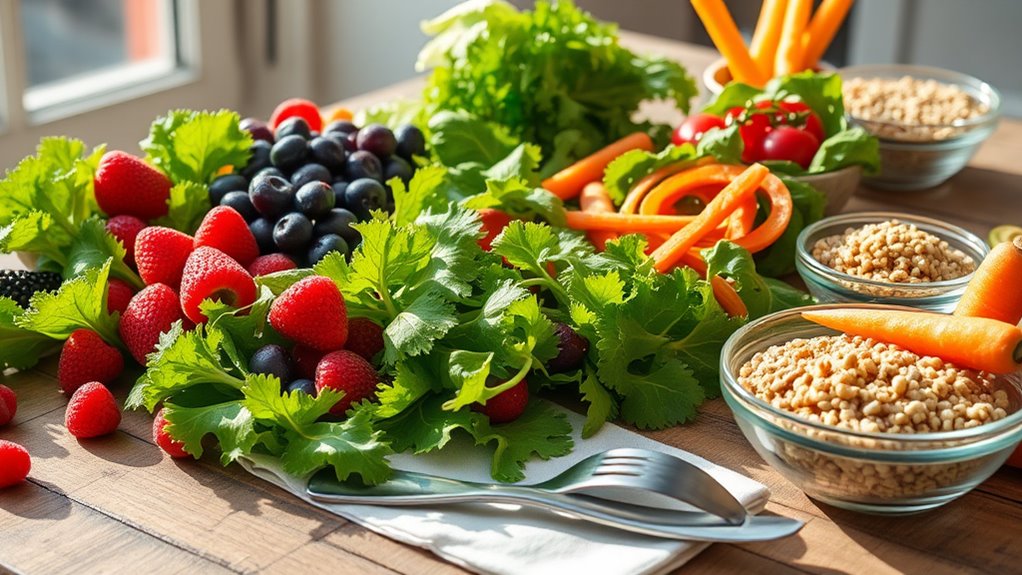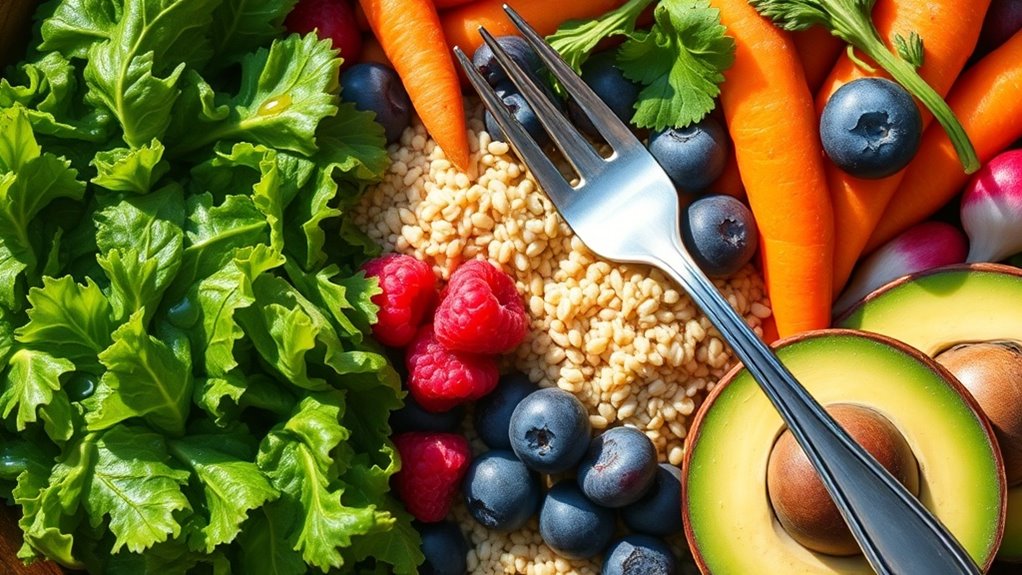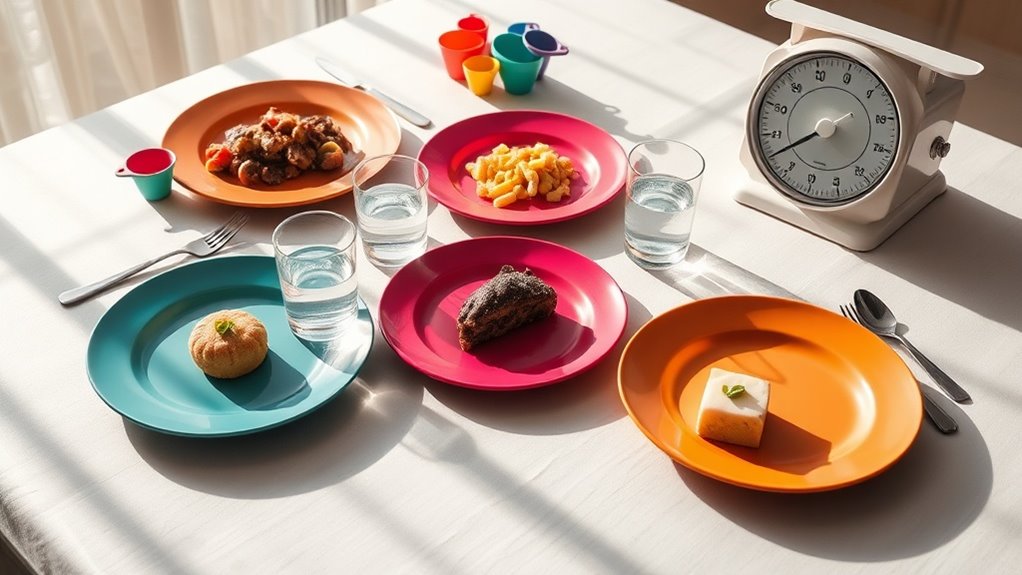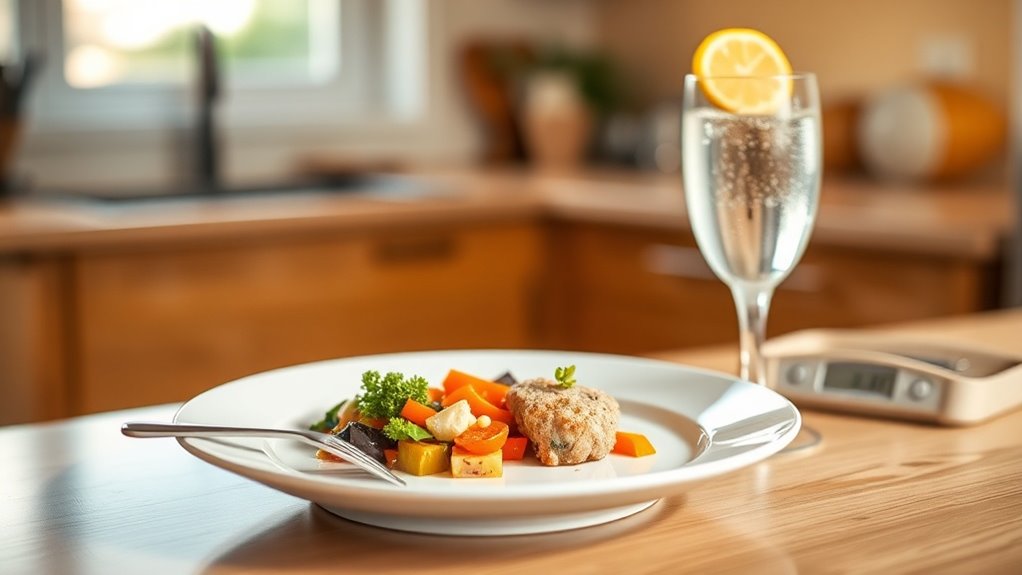The Secret to Eating More and Still Losing Weight
Have you ever thought it’s possible to eat more and still lose weight? The key lies in understanding caloric density and making smart food choices. By selecting high-volume, low-calorie foods, you can fill your plate without guilt. But there’s more to it than just what you eat. Discovering how fiber plays a role in managing hunger could change the way you think about meals and snacks. Let’s explore this further.
Understanding Caloric Density
When you understand caloric density, you can make smarter food choices that help you eat more while losing weight.
Caloric density refers to the number of calories in a given volume of food. Foods with low caloric density, like fruits and vegetables, let you enjoy larger portions without packing on the pounds.
This means you can fill your plate and satisfy your hunger while staying within your caloric limits. Additionally, focusing on whole, nutrient-dense foods can enhance your metabolism and support sustainable weight management.
Choosing High-Volume Foods
To lose weight while still enjoying your meals, focus on choosing high-volume foods that fill you up without excess calories. Think about incorporating more fruits, vegetables, and whole grains into your diet. These foods are typically low in calories but high in water and fiber, making them great for satisfying your hunger.
For example, a big salad loaded with colorful veggies can be both delicious and filling, allowing you to enjoy a generous portion without guilt. Additionally, incorporating nutrient-dense foods into your meals can enhance satisfaction and promote overall health.
Don’t forget about soups and stews, which can be hearty and comforting while keeping the calorie count low. Experiment with different recipes and flavors to keep your meals exciting.
The Role of Fiber in Weight Loss
High-volume foods naturally lead you to include more fiber in your diet, which plays a significant role in weight loss. When you fill your plate with fiber-rich options like fruits, vegetables, and whole grains, you’re not just adding bulk; you’re also promoting satiety. This means you’ll feel fuller for longer, helping you resist those tempting snacks between meals.
Moreover, fiber helps regulate digestion, keeping your metabolism running smoothly. As you incorporate more fiber, you might notice a natural reduction in calorie intake, as these foods are often lower in calories yet packed with nutrients. Additionally, a balanced microbiome supports appetite control and enhances your overall digestion, further aiding your weight loss efforts.
Joining others in this journey can make it even more enjoyable. Sharing recipes or meal ideas focused on fiber can create a sense of community and support.
Smart Snacking Strategies
While snacking might seem like a hurdle in your weight loss journey, using smart strategies can actually enhance your progress.
First, choose nutrient-dense snacks that keep you full longer. Think fresh fruits, veggies with hummus, or a handful of nuts. These options not only satisfy cravings but also provide essential vitamins.
Next, pay attention to portion sizes. Instead of munching straight from the bag, portion out your snacks in advance. This way, you can enjoy your treats without overindulging.
Also, consider timing your snacks. Eating every few hours can help stabilize your energy levels and prevent binge eating later.
Finally, make your snacks enjoyable. Experiment with new flavors or recipes that excite your taste buds. When you find joy in your choices, you’ll feel more connected to your journey. Additionally, remember that hydration significantly impacts weight loss progress, so drink plenty of water alongside your snacks.
Meal Planning for Success
Meal planning can significantly enhance your weight loss efforts, especially when you take the time to organize your meals in advance. By mapping out your week, you’ll not only save time but also ensure you’re eating nutritious foods that fuel your body.
Start by choosing a day to plan your meals—this creates a sense of routine and belonging to a supportive community.
Consider making a list of your favorite healthy recipes that you enjoy. This makes grocery shopping easier and keeps you excited about your meals. When you prepare your food ahead of time, you’re less likely to reach for unhealthy options in moments of hunger.
Don’t forget to include snacks! Having healthy options ready to go can keep you satisfied and on track. Additionally, utilizing balanced meals can help ensure you’re getting the essential nutrients needed for optimal health.
Staying Hydrated to Curb Hunger
Staying hydrated is essential not just for overall health but also for managing hunger effectively. When you sip water throughout the day, you can stave off those pesky cravings that often lead to overeating.
Think about how refreshing it feels to quench your thirst, and how it helps you feel more connected to your body.
- You’ll feel energized and ready to tackle your day.
- You’ll find it easier to focus on your goals together with friends and family.
- You’ll create a sense of community as you share hydration tips and tricks.
Make water your go-to beverage and aim for at least eight glasses daily. Additionally, drinking water before meals can reduce appetite and is a simple yet powerful way to empower yourself in your weight loss journey.




